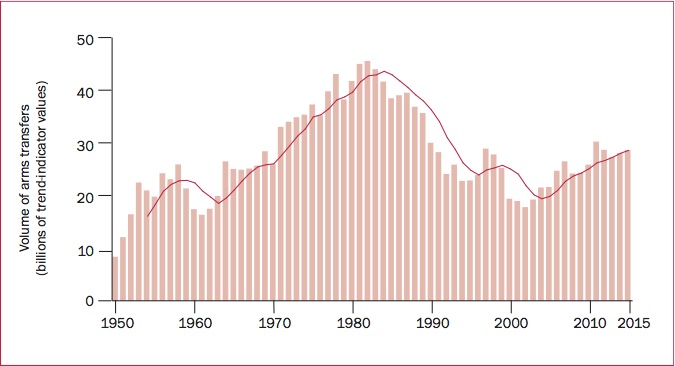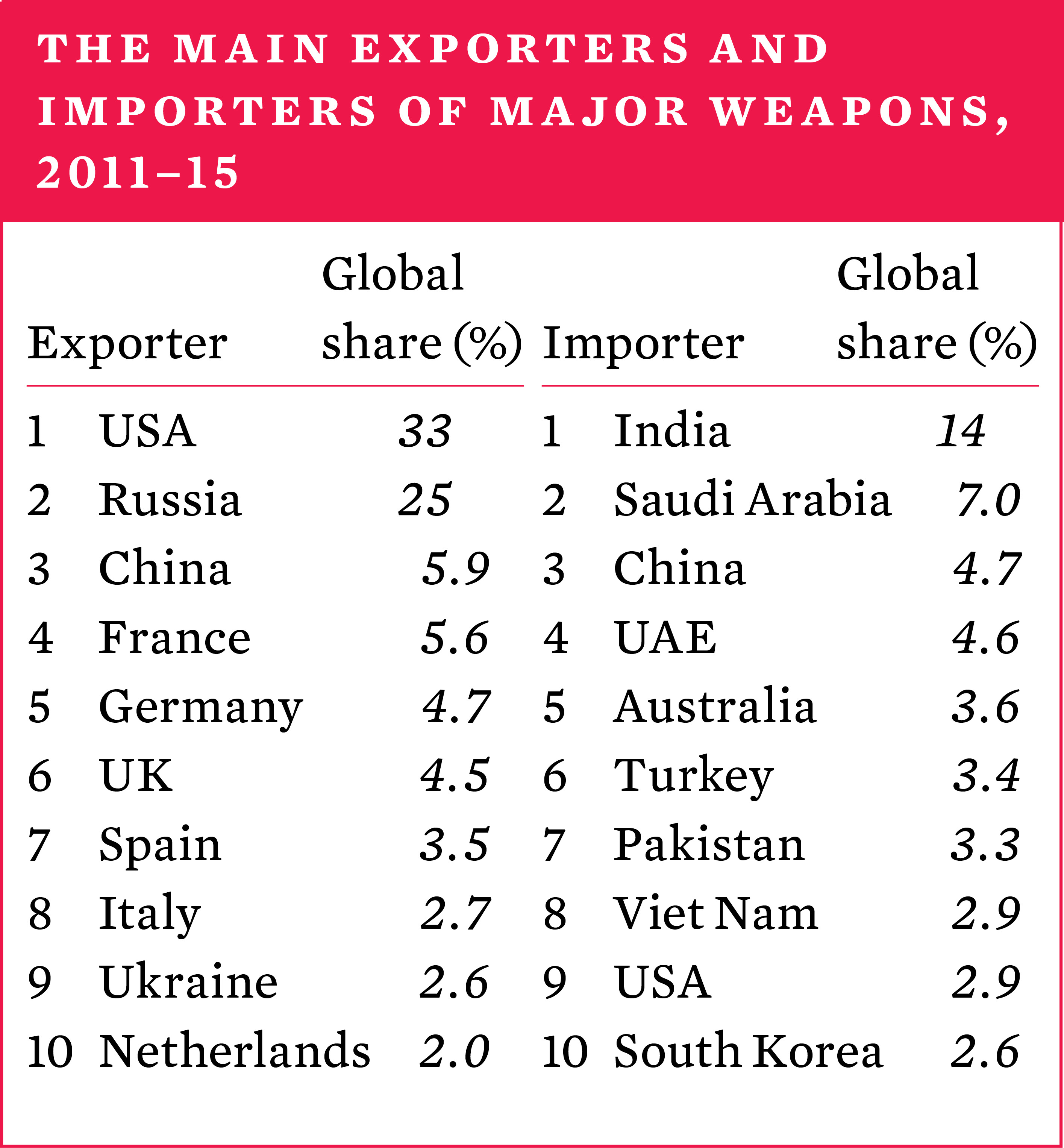15. International arms transfers
Overview, Siemon T. Wezeman [PDF]
I. Developments in arms transfers, 2015, Siemon T. Wezeman, Aude Fleurant, Sam Perlo-Freeman and Pieter D. Wezeman [PDF]
II. Arms transfers to the Middle East and North Africa, and the military intervention in Yemen, Pieter D. Wezeman [PDF]
III. Transparency in arms transfers, Mark Bromley and Siemon T. Wezeman [PDF]
IV. The financial value of states' arms exports, Mark Bromley and Sam Perlo-Freeman [PDF]
The volume of international transfers of major weapons grew by 14 per cent between 2006–10 and 2011–15. The five largest suppliers in 2011–15—the United States, Russia, China, France and Germany—accounted for 74 per cent of the volume of exports.
The USA and Russia have consistently been by far the largest suppliers since 1950. Together with Western European suppliers, they have historically dominated the top 10 list of suppliers, and there is no sign of any major change. This group increased its share of the global total between 2006–10 and 2011–15, but has been joined by China which has firmly established itself as one of the world’s largest exporters of major weapons.
At the regional level, the flow of arms to the Middle East grew by 61 per cent between 2006–10 and 2011–15. The flow of arms to Asia and Oceania, and Africa also rose during this period, by 26 and 19 per cent respectively. By contrast, the flow of arms to Europe decreased by 41 per cent.
States in Asia and Oceania received 48 per cent of all imports of major weapons in 2011–15. Of the five largest recipients of major weapons, three were located in Asia and Oceania: India, China and Australia.
The ongoing conflicts in many parts of the world in 2015 often had direct links to arms acquisitions from abroad. The Middle East and North Africa (MENA) experienced significant growth in arms imports in the past five years. The use of arms imported by states in the MENA in the conflict in Yemen in 2015 led to discussion of the morality and even legality of exporting arms to states in the region.
Transparency in arms transfers
Following the trend set in recent years, 2015 proved to be another disappointing year for transparency in arms transfers. The number of states reporting their arms imports and exports to the United Nations Register of Conventional Arms (UNROCA) fell again in 2015. Only just over a quarter of all UN member states used the UNROCA mechanism to report basic data on imports and exports. In the period 2010–14, which covers the five most recent reporting years, several of the top 10 suppliers of major arms as recorded by SIPRI failed to report to the UNROCA every year, and a number of the largest importers were absent in all five years. Participation in some regions, particularly Africa and the Middle East, has been consistently low in recent years. With the exception of the reporting mechanisms used in Western Europe, participation in regional reporting mechanisms also appears to be in decline. Neither Asia nor the Middle East has such a mechanism.
The trend in transfers of major weapons, 1950-2015

The financial value of arms exports, 2014*
Although SIPRI data does not represent the financial value of arms transfers, many arms exporting states do publish figures on the financial value of their arms exports. Based on such data, SIPRI estimates the total value of the global arms trade in 2014 to be at least $94.5 billion. However, the true figure is likely to be higher.
*The latest year for which data is available.
